The Leading Edge: March 2023 Wind Energy Newsletter
In this edition, we discuss advances in distributed wind energy, a researcher's 43 years at the lab, updates on the lab's facilities, a drivetrain workshop, a rotor wake study, and more.
News Stories
Distributed Wind Energy Brings Value to Remote and Rural Communities
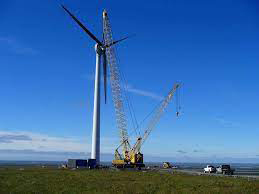
A 900-kW Emergya Wind Technologies turbine began operating in 2019 in St. Mary’s, Alaska. The MIRACL project analyzed its resilience benefits and value streams, along with the potential benefits of more advanced control. Photo from the U.S. Department of Energy
Now, thanks to the 4-year Microgrids, Infrastructure Resilience, and Advanced Controls Launchpad (or MIRACL) project, researchers have quantified distributed wind energy's many benefits—from energy cost savings to enhanced resilience—for communities across the United States. The data from the collaborative team of researchers from NREL, Pacific Northwest National Laboratory, Sandia National Laboratories, and Idaho National Laboratory verified that distributed wind energy could be a cost-effective source of clean power and also build resilience into smaller or hybrid power systems, such as microgrids or isolated grids, even if they're threatened by cold snaps, natural disasters, or cyberattacks.
Launched in 2018 by the U.S. Department of Energy (DOE) Wind Energy Technologies Office (WETO) and NREL, the MIRACL project produced numerous publications and databases and worked directly with rural electric utilities and communities to demonstrate how they could safely, effectively, and efficiently integrate wind energy into distributed, islanded, or microgrid systems.
Behind the Blades
Researcher Spent 43 Years Helping Expand Wind Energy Frontiers
Dave Simms started his career in renewable energy at NREL in 1979. That was more than a decade before the laboratory was called NREL and 1 year before the United States built the world's first wind energy farm—which had a humble power capacity of about one-half of a megawatt (MW), or about enough to power a single U.S. home for 1 month. When Simms retired in January 2023, the global wind power capacity was more than 1 million times that.
The expansion of the wind energy industry over the past several decades has, of course, involved many influential researchers, energy policymakers, and project developers. But it's no coincidence that some significant developments in the field—such as a better understanding of wind turbine aerodynamics and advances in safety protocols that have helped advance wind research at NREL—coincide with Simms' 43-year-long career.
"It's been a dream come true for me to witness and participate in the incredible evolution of renewable energy technology throughout my career at NREL," he said.
In the late 1970s and early 1980s, Simms spent most of his time developing computer models for solar energy systems and energy-saving buildings. In the 1980s and 1990s, he conducted field experiments for wind energy and solar power projects.
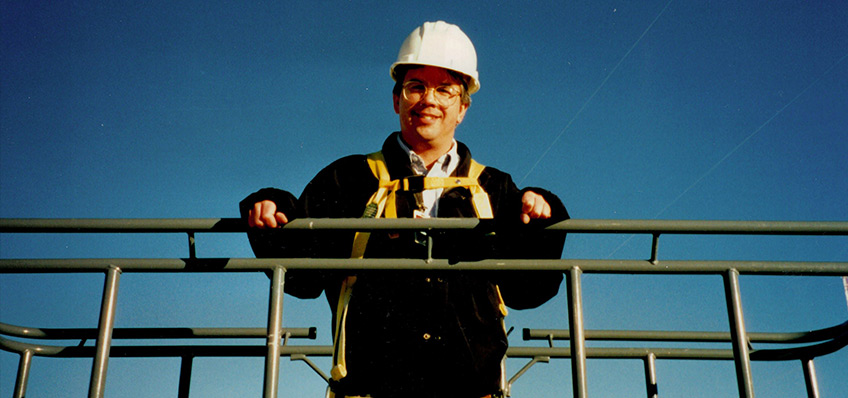
During the 1990s, Simms led the Unsteady Aerodynamics Experiment, a multimillion-dollar research project funded by DOE aimed at better understanding the underlying physics of air flow around rotating wind turbine blades as well as its physical effects on the blades themselves. An international science panel of wind technology experts collaborated on the project.
The experiment started with development and field deployment of a highly specialized research wind turbine at NREL's Flatirons Campus, uniquely configured to make high-precision measurements of aerodynamic and structural behavior on the operating turbine. In 2000, the NREL turbine was installed in the giant NASA Ames Research Center wind tunnel capable of producing wind velocities up to 115 miles per hour.
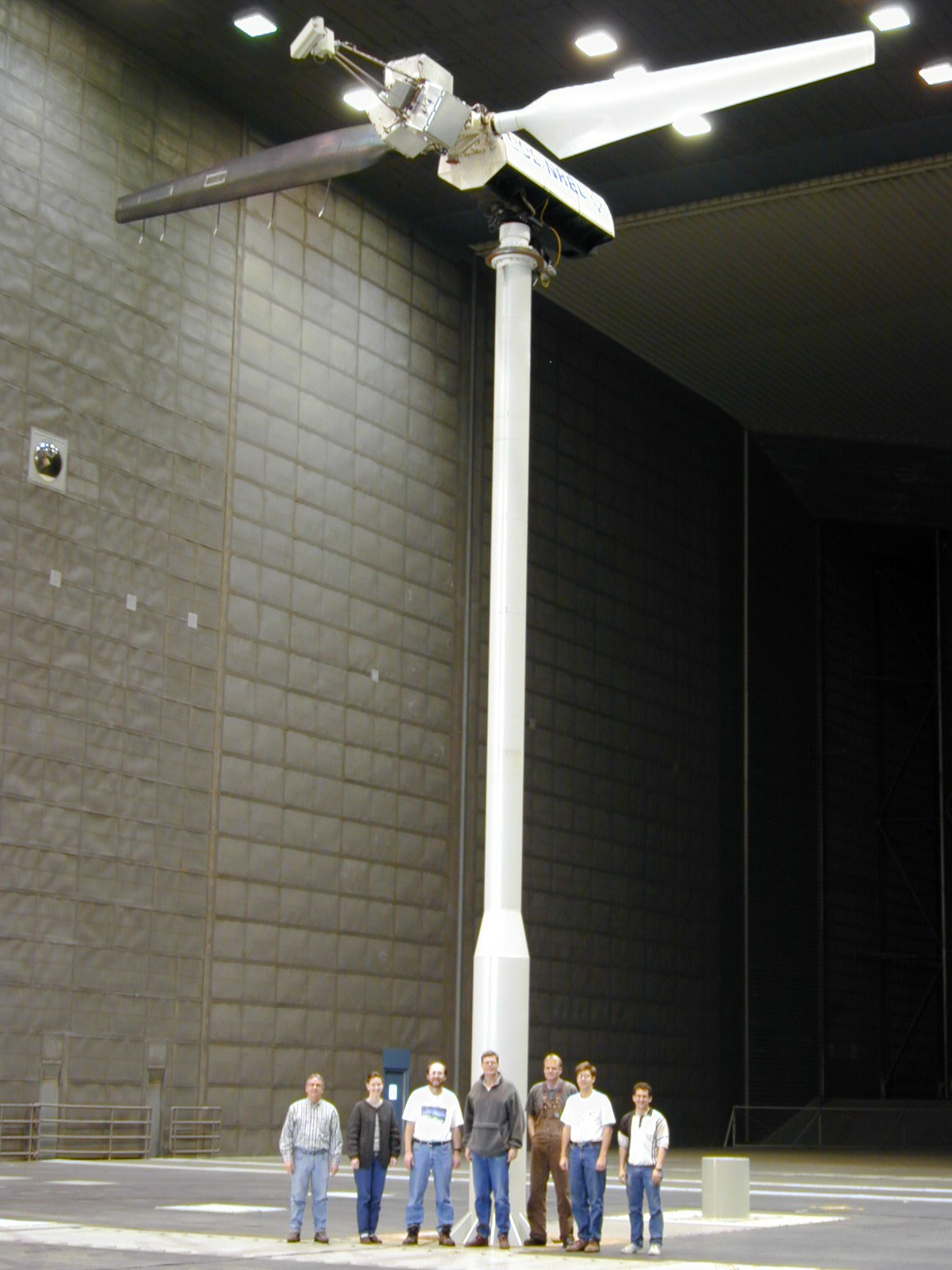
Bob Thresher, NREL senior research fellow emeritus, explained that the results of the 3-week series of wind tunnel experiments were used to compare wind turbine model predictions with measured behavior. Researchers conducted a blind experiment in which the wind tunnel results were hidden from wind turbine aerodynamics experts from 17 entities, who were provided details about the turbine and flow conditions.
The result of the blind experiment? No one—not one researcher—could predict the aerodynamic behavior.
"Everybody who tried was shocked," Thresher said. "They were off by factors of two to four on the load on turbines. The experiment caused a rethinking of modeling, led to additional follow-on research funding, and was an important milestone that help in the development of larger wind turbines."
"This research really moved wind technology forward—it was a big deal," Thresher continued. People still use that data set—22 years old now. It was a very good piece of experimental research. Lots of students got their Ph.D.s looking at the data, and Dave was the lead author of the report."
Simms began the report—cowritten with Scott Schreck, Maureen Hand, and Lee Jay Fingersh—with (arguably) two of the most elegant and humble opening sentences of any technical report ever written:
"Evidently, we're not as smart as we would like to think we are, especially in predicting wind turbine behavior. We're learning that the physics of wind turbines are much more complex than we had imagined, especially the underlying aerodynamic responses."
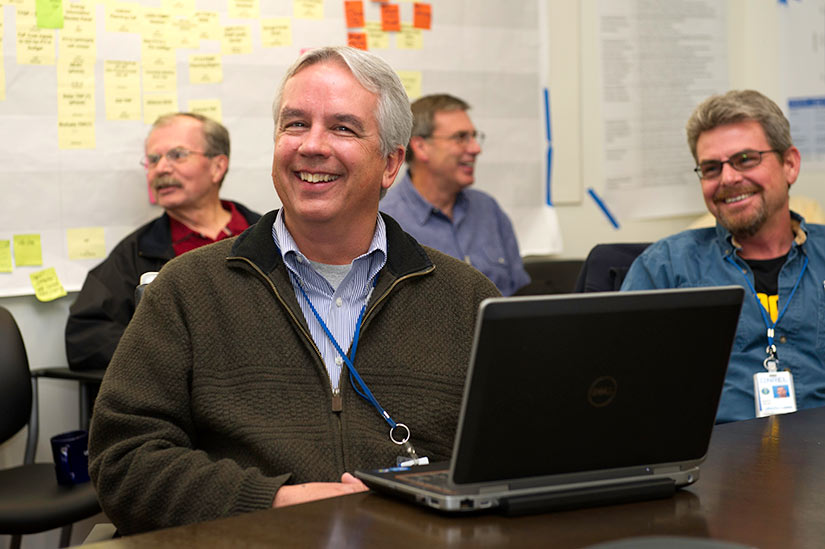
The recipient of several NREL awards during his 43-year career, Dave Simms won a Chairperson's Award in 2012 for outstanding and sustained contributions to the lab. Photo by Dennis Schroeder, NREL
Later in his career, Simms championed the philosophy that safety is not an obstacle to performing research but rather a key to its success. In his final role as NREL's Flatirons Campus research operations director, he developed numerous safety programs, trainings, and protocols, including installing lightning-detection systems and elevators on tall towers to help NREL researchers do their jobs safely, quickly, and easily. Over the past 10 years, in anticipation of significant potential hazards associated with the Flatirons Campus' growing grid integration research mission, Simms' main focus was developing a highly collaborative and inclusive culture of safety. This culture relies heavily on effective communications, creative ideas, and expertise from all researchers, technicians, safety professionals, and leadership.
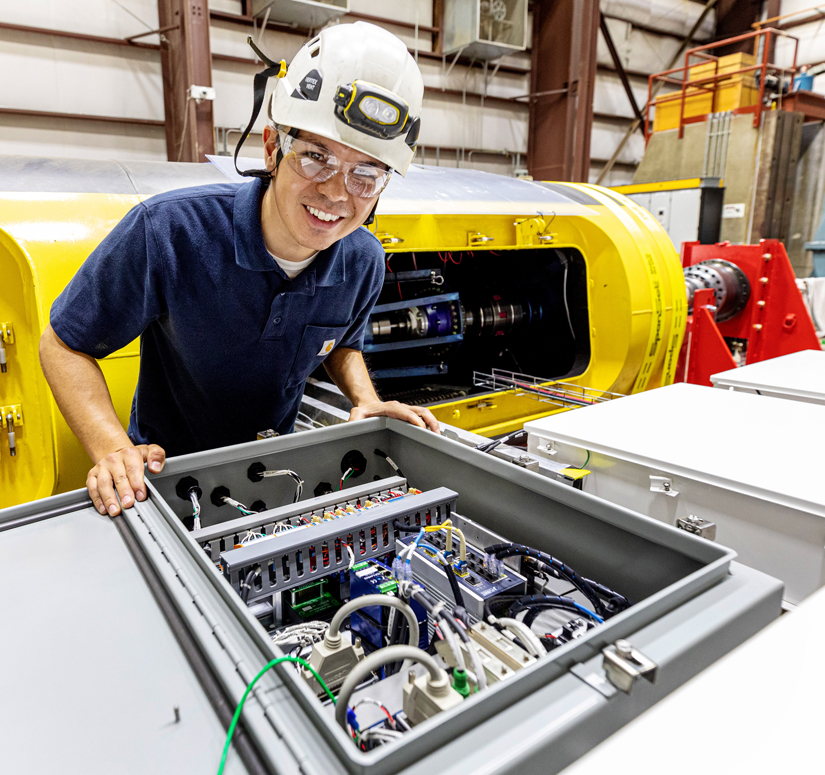
Andrew Simms, David’s son, is a water power researcher at NREL. He is one of the many people whose careers were inspired by David Simms. Photo by Werner Slocum, NREL
Simms might be retired from NREL now, but the next generation of researchers is still building on the impacts of—and inspiration drawn from—his work. A great example is Simms' son, Andrew. A member of NREL's water power research team, Andrew Simms is now writing his own renewable energy evolution story.
On the Radar
Flatirons Campus Facilities Growing, Expanding Lab Capabilities
NREL's Flatirons Campus near Boulder, Colorado, provides a unique research environment by hosting real-world, megawatt-scale renewable energy technologies—such as photovoltaic arrays, batteries, and wind turbines—that work in combination with laboratory-based hardware—such as dynamometers and digital real-time simulators all in one place—to develop, evaluate, and validate renewable energy technologies. As such, the Flatirons Campus is a crucial part of the Advanced Research on Integrated Energy Systems platform, which enables grid integration research at scale.
NREL, with DOE support, continues to make investments in expanding research facilities at NREL's Flatirons Campus to support the broadening multiprogram research mission. The Bipartisan Infrastructure Law and Inflation Reduction Act have further enabled NREL to secure investments to improve the lab's capabilities, such as the addition of a distributed energy integration laboratory and upgrades to electrical infrastructure to improve efficiency and sustainability.
To support complex experiments that utilize all the assets at NREL's Flatirons Campus, designs have been drafted for a new control center facility, with construction expected to begin in 2024. Several other efforts are nearing completion, including the installation of a new controllable grid interface, megawatt-scale hydrogen fuel cell electrolyzer system, and expanded power system emulation capabilities. The controllable grid interface is a brand-new, 20-MW addition that can output at 13.2 and 34.5 kilovolt (kV) AC or 5 kV DC, which expands virtual simulation beyond that of the current 7-MW, 13.2-kV controllable grid interface alone. Once online, these facilities will be available for use by DOE and industry.
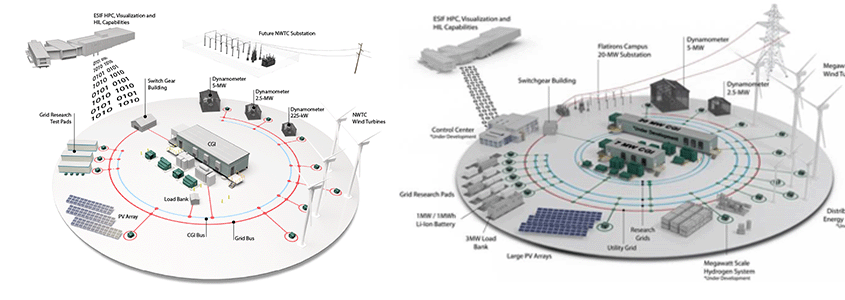
NREL Helps Envision the Future of Wind Operations, Maintenance, and Digitalization
NREL hosted the annual Drivetrain Reliability Collaborative Workshop Feb. 21–23, 2023. The collaborative, which is funded by WETO and led by NREL wind energy researcher Jon Keller, unites wind energy industry members around the goal of increasing drivetrain reliability and reducing wind power plant operations and maintenance costs, which make up a sizable share of the levelized cost of wind energy. The 180 participants—from industry, academia, the federal government, and national labs—discussed the latest in drivetrain design and failure-mode research to improve reliability, the status of wind power plant operations and maintenance (O&M), including offshore wind O&M and digitalization.
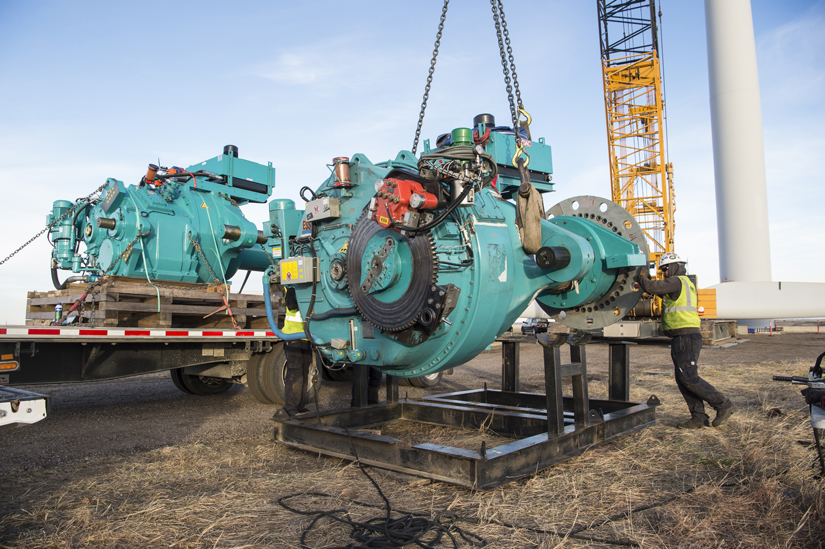
Feedback from the meeting will guide future drivetrain reliability research and partnerships as well as inform road-map development efforts on offshore wind energy operations and maintenance strategy (led by NREL's Shawn Sheng) and digitalization in wind energy (led by NREL's Jason Fields). Feedback from the meeting will inform future road maps. The O&M road map is expected to be completed during summer 2023 in collaboration with Sandia National Laboratories, and the wind energy digitalization road map—for which NREL researchers will work with those from Pacific Northwest National Laboratory, Idaho National Laboratory, and university and industry partners—is planned to be done by the end of Fiscal Year 2023. They will highlight impactful R&D opportunities in both offshore wind energy O&M and wind energy digitalization that can maximize the benefits from DOE investment to help the U.S. wind energy industry advance and accomplish deployment goals. The road maps will also benefit global research communities in related topic areas.
Downwind: In Case You Missed It
Brent Summerville Receives Award for Work in Distributed Wind Energy
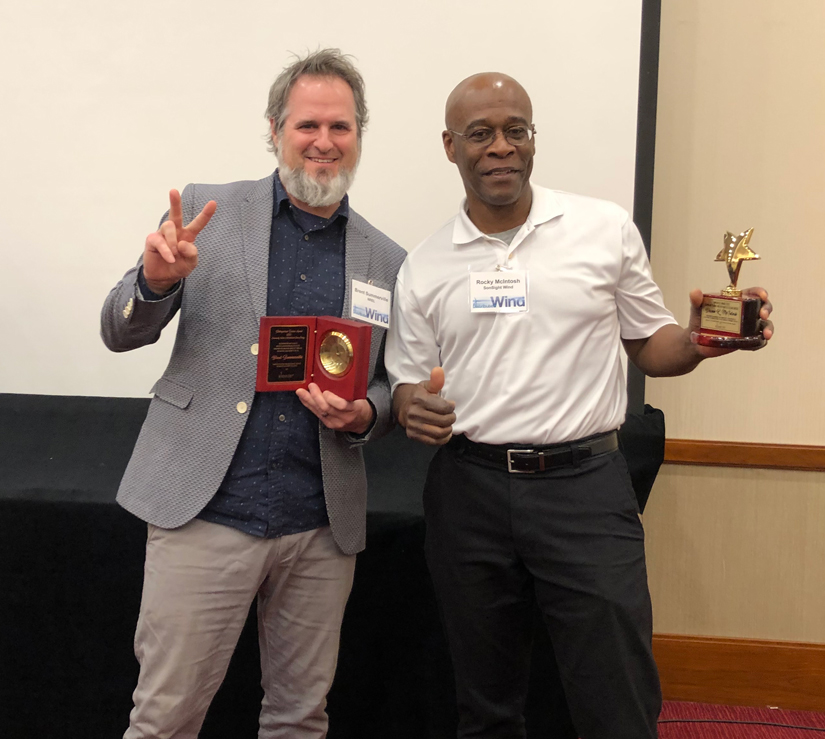
At the February 2023 Distributed Wind Energy Association Conference in Arlington, Virginia, Brent Summerville, a system engineer at NREL, received the Windustry 2023 Distinguished Service in Community Wind Award for his work on numerous distributed wind energy projects, including standards development, the Competitive Improvement Project, and deployable wind energy systems.
This award is "given annually to a person or program that has made exceptionally significant contributions, over several years, to the establishment and growth of locally owned and distributed wind as a uniquely valuable form of clean, renewable energy. When an individual is the recipient, he or she possesses outstanding dedication, excellence and achievement and has worked over many years to further the goals of community wind and distributed renewable energy." Learn more about Summerville's career and work in our December 2021 Behind the Blades profile.
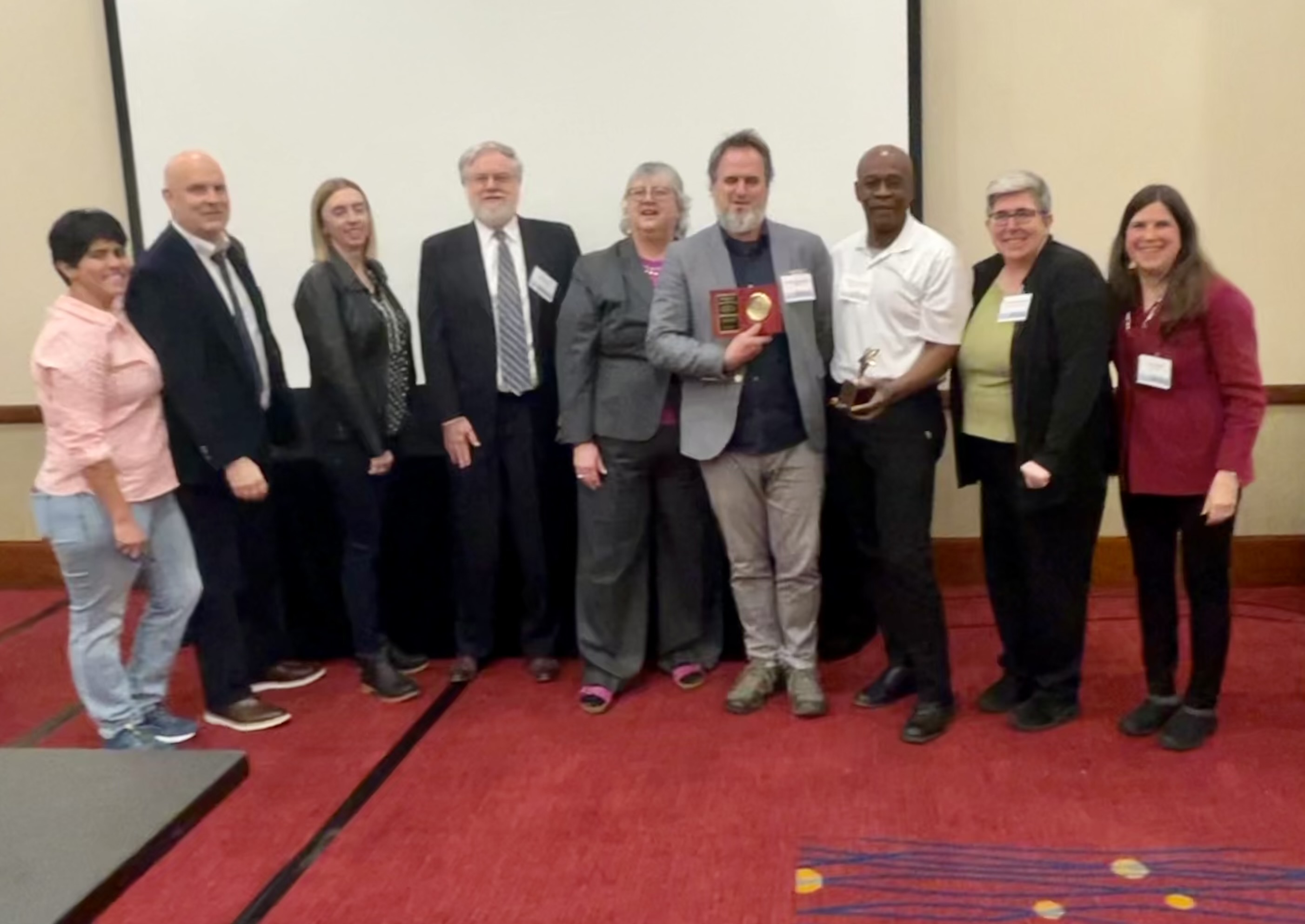
NREL Experts Present the Future of the Offshore Wind Energy Supply Chain and Workforce
The DOE WETO WINDExchange initiative recently hosted a webinar in which wind energy researchers from the National Renewable Energy Laboratory presented on the current state and future needs of the U.S. offshore wind energy workforce and supply chain. Missed the webinar, or want to refresh your memory? Check out the webinar recording now.
Nine Teams Advance to Phase Two of Wind Energy Prize
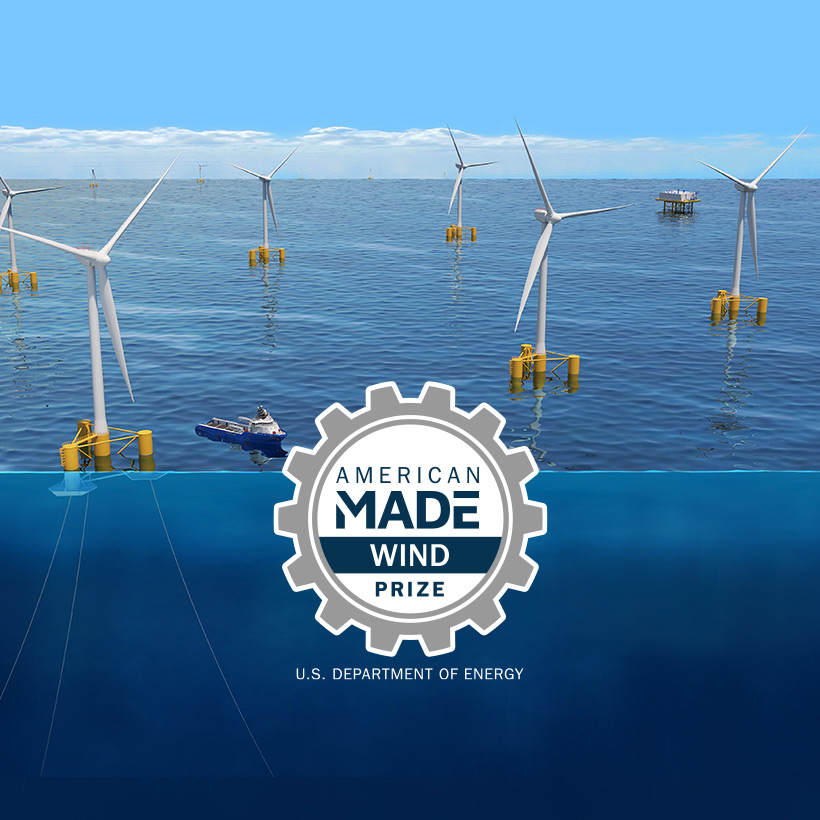
The FLOWIN Prize is an American-Made Challenges competition designed to accelerate the market readiness of U.S. floating offshore wind energy technologies. Image by Besiki Kazaishvili, NREL
Nine winners have been named after the first phase of the American-Made Challenges FLoating Offshore Wind ReadINess (FLOWIN) Prize, which aims to unlock the nation's offshore wind energy potential by accelerating manufacturing and deployment of U.S. floating offshore wind energy technology. The three-phase FLOWIN Prize was launched by NREL on behalf of WETO in September 2022. Find out which teams were selected to receive $100,000 in cash and $75,000 in vouchers for technical support and an invitation to move on to Phase Two of the competition.
Southeast Asia Wind Resource Data Set Released Through the Renewable Energy Data Explorer
A high-fidelity time series wind resource data set for all of Southeast Asia is now available. With a 3-km spatial and 15-min temporal resolution and a 15-year record, this is a first-of-its-kind public data set for the region. The data set can be accessed or downloaded through NREL's Renewable Energy Data Explorer, a geospatial analysis tool for visualizing and analyzing renewable energy resource potential. Development of both the wind and solar resource data sets was made possible through support from the United States Agency for International Development's Regional Development Mission for Asia.
Upcoming Events and Opportunities
Join NREL and WETO researchers at upcoming events. Below are a few highlights.
Business Network for Offshore Wind's 2023 International Partnership Forum
March 28–30, 2023, Baltimore, Maryland
This week, join NREL and WETO researchers at the Business Network for Offshore Wind's 2023 International Partnership Forum to discuss offshore wind energy. NREL's Patrick Duffy, Rebecca Green, Eric Lantz, Shahil Shah, Stein Housner, Suzanne MacDonald, Shawn Sheng, and Walt Musial are leading panels and workshops.
Collegiate Wind Competition 2023 Final Event
May 15–19, 2023, Boulder, Colorado
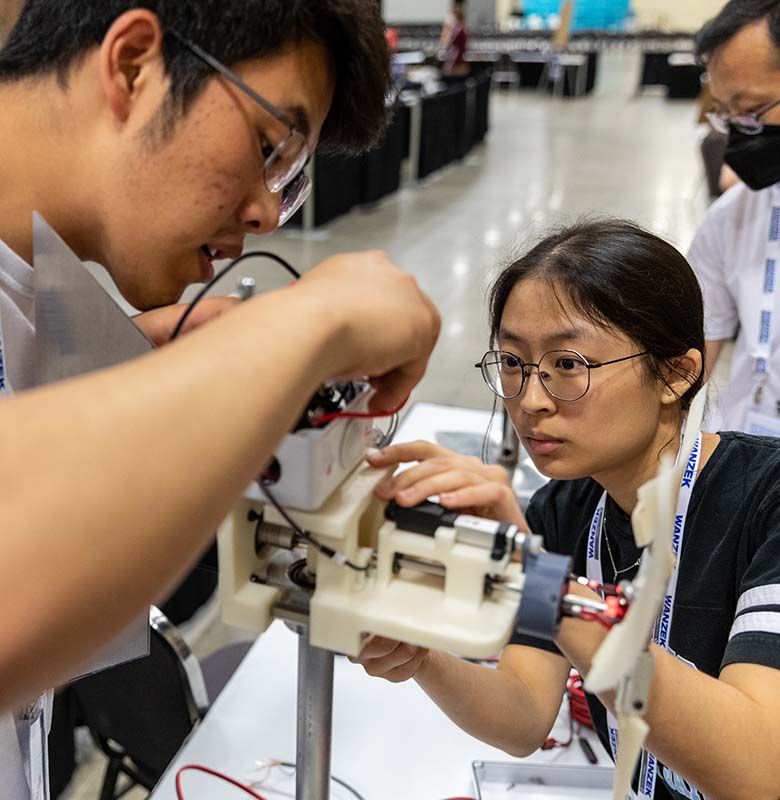
College students from a range of disciplines are preparing to showcase their work and meet with members of the wind energy industry at the Collegiate Wind Competition 2023 final event. Photo by Werner Slocum, NREL
Join the DOE Collegiate Wind Competition 2023 final event, where multidisciplinary teams of college students will network with members of the wind industry, test their wind turbine prototypes, and present their wind turbine designs, wind energy project development plans, and outreach efforts to panels of experts. Registration details and a full schedule of events are coming soon. Join the competition mailing list to be notified when these are available.
Clean Energy to Communities In-Depth Partnership Proposals
May 17, 2023, Online
The Clean Energy to Communities program is seeking four to five communities for in-depth technical partnerships that will help them address challenges to achieving their clean ambitions. NREL and other national labs will help selected communities plan secure, reliable, resilient, and affordable energy systems that align with their local and regional priorities. Learn more about the Clean Energy to Communities program, and submit a proposal by May 17, 2023.
Energy Transitions Initiative Partnership Project Community Technical Assistance
May 19, 2023, Online
DOE's Energy Transitions Initiative Partnership Project helps remote and island communities transform their energy systems and increase energy resilience, supported by NREL and along with regional partners. Through the project, communities gain access to technical assistance to carry out clean energy projects. Learn more about the submission process and requirements; applications are due May 19, 2023.
New Prizes Support Diversity, Equity, Inclusion, and Accessibility in Clean Energy
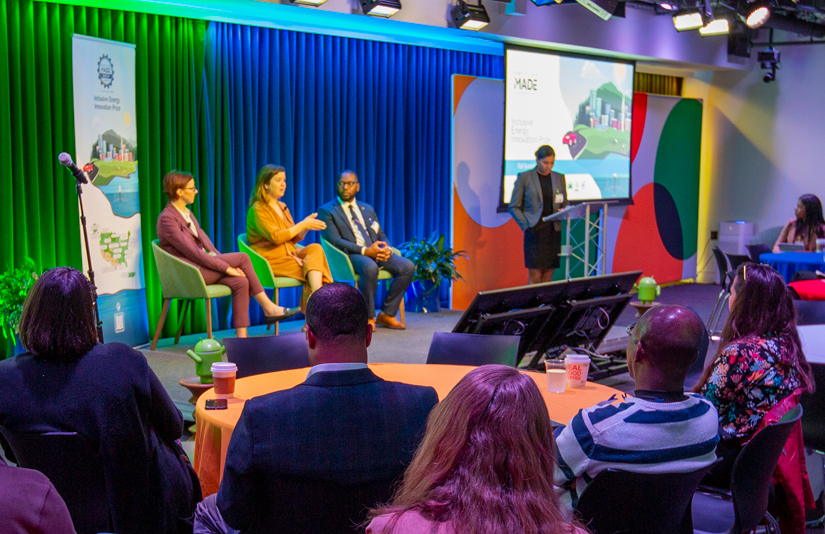
Renewable energy experts, energy justice advocates, and competitors in the U.S. Department of Energy’s Inclusive Energy Innovation Prize—the first prize designed around the Biden administration’s Justice40 Initiative—gathered in November 2022 to share ideas and plans for building an equitable renewable energy infrastructure. Photo by Taylor Mankle, NREL
May 15 and 24, 2023, Online
Challenges from DOE's American-Made program increase access to funding, training, testing, and mentorship so everyone can be a part of the U.S. clean energy transition. New prizes aim to improve accessibility—along with diversity, equity, and inclusion. Learn more about the latest DEIA-focused, renewable energy prizes, open to everyone.
NAWEA/WindTech 2023 Conference
Oct. 30–Nov. 3, 2023, near Boulder, Colorado
Abstract submissions are now open (due May 5, 2023) for the 2023 NAWEA/WindTech Conference, which brings together wind energy representatives from around the world. The conference will be held in person near Boulder, Colorado, Oct. 30–Nov. 1, 2023, with additional events (including a Graduate Student Symposium) Nov. 2–3, 2023. This year, the theme will center around a future where high levels of wind energy deployment meet the needs of a grid dominated by renewable energy, the social and environmental issues at the core of such an expansion, and the "grand challenges" of wind energy. Explore the track topics, and subscribe to get conference updates.
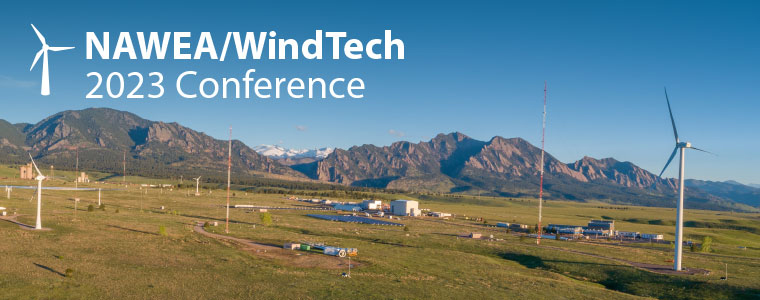
NREL in the News
National Lab Helping GVEA Replace Healy 2 Power With Wind Energy, Tim Ellis, KUAC, March 22, 2023
IRA Will See Solar and Wind Account for Over 60% of U.S. Generation by 2030–NREL, Will Norman, PV Tech, March 21, 2023
U.S. Offshore Wind Terminal Reaches Milestone–But So Much More Needed To Hit Biden's Goal, Tim Ferry, Recharge, March 17, 2023
Fulfilling U.S. Wind and Solar Ambitions Will Use Under 1% of Its Land (That's Less Than the Fossil Fuel Footprint), Steve Clemmer, Energy Post, March 16, 2023
Shell Ploughs $10M Into Push To Develop 'Gulf of Mexico Offshore Wind Turbine,' Tim Ferry, Recharge, March 14, 2023
Adani Groups Seeks Capacity Enhancement for Sri Lanka Wind Project, M Ramesh, The Hindu Business Line, March 12, 2023
World's First ISWEC Device Installed Off the Coast of Pantelleria Island, Environment and Energy Leader, March 7, 2023
Currently 'Not Enough Workers' in the Labor Force to Meet Offshore Wind's 2030 Goals: NREL, Diana DiGangi, Utility Dive, March 6, 2023
The First Commercial Spiral-Welded Wind Turbine Tower Signals a New Renewables Milestone, Oraan Marc, Auto Evolution, March 5, 2023
U.S. Sets Out Gulf of Mexico Offshore Wind Lease Areas; European Union Carbon Prices Hit 100 Euros/Tonne, Reuters Events, March 1, 2023
Publications
Energy Potential
Exploring the Impact of Near-Term Innovations on the Technical Potential of Land-Based Wind Energy, NREL Technical Report (2023)
Software and Tools
An Integrated Platform for Wind Power Plant Operations: From Atmosphere to Electrons to the Grid (A2e2g), NREL Technical Report (2023)
Coupled Loads Analysis of a Novel Shared-Mooring Floating Wind Farm, Applied Energy (2023)
Enabling Floating Offshore VAWT Design by Coupling OWENS and OpenFAST, Energies (2023)
Technology
Renewable Energy Wildlife Institute Technology Acceptance Workshop Proceedings, NREL Technical Report (2023)
Want More?
Subscribe to The Leading Edge newsletter, and explore the latest news and accomplishments in wind energy at NREL.
Share

